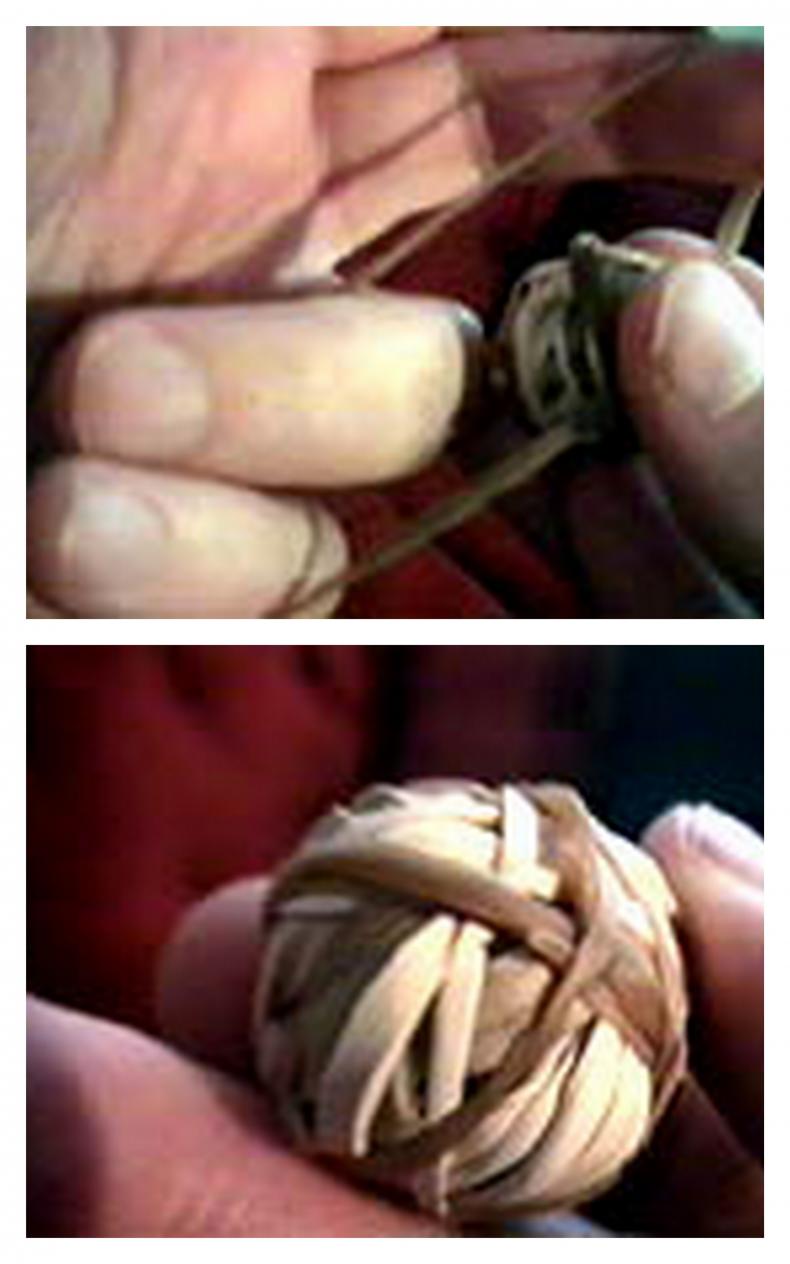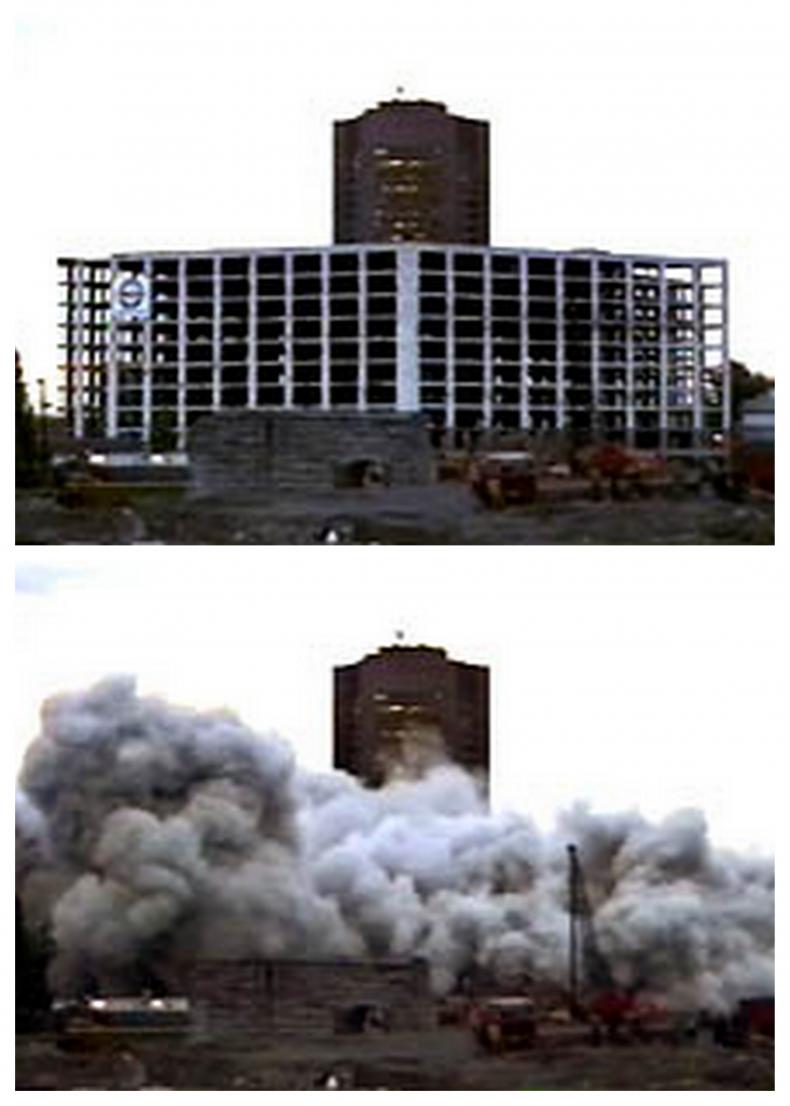Video's Body
Video's Body
Analog and Digital
Analog video seems to have come of age as an art form1 only at the time when technically it has been upstaged by the standards of the faster, more ”interactive,” and more virtual digital media. In this, video follows the time-honored pattern in which forms of aesthetic expression are valued most highly when they become obsolete or threatened.
Video is dead; long live video!
Is digital video a virtual medium?
It is easy to say that analog video had a body, insofar as it depended on the physical support of the cathode ray tube and electronic broadcasting. By contrast, given that it is common for critics to say that digital media exist only virtually, digital video seems to have given up its body. However, some developments since the advent of digital video show that artists are taking the opportunity to reflect on the nature of the new medium and to conclude that both analog and digital video are bodies with lifespans. These works, some of which I discuss in what follows, also reflect on the state of human bodies in analog and digital worlds.
To gain a sympathy with the medium as a perceiving and communicating body, I take a phenomenological understanding derived from Vivian Sobchack (Sobchack 1992). How does analog video perceive the world and use its body to communicate? How do this perception and communication change in digital video? How do our own perceiving bodies respond to each medium? My approach is implicitly informed by Henri Bergson’s, C.S. Peirce’s, and Manuel De Landa’s quite different understandings of how life inheres in matter, to ask, how do video bodies live and, what is the difference between analog and digital life? Finally, I base the politics of this search for video bodies on Sean Cubitt’s digital aesthetics, which seeks to define materiality and specificity of media practices (Cubitt 1998). So in order to define video as a body we need not fetishize literal analogicity or indexicality of video; instead we can look at the material circumstances in which the work was produced. Nevertheless, I find that many video artists are in disavowal of the lost analog body and attempt melancholically to recuperate it. Others are exploring the structure of digital video in an attempt to isolate its own typical embodiedness.
Analog and digital bodies
For my purposes here I define an analog medium as one that creates an indexical representation of reality. A digital medium is one that translates reality into a series of 1s and 0s. As I argued in Low tech is how electrons remember, the body of analog video is constituted from flows of electrons that maintain an indexical link with the physical world. For example, a certain wavelength of red is captured by a corresponding configuration of electrons on tape. Thus analog video has a body that is analogous to the visual and electronic reality to which the video camera or videotape was exposed. It perceives the world and expresses its perception to viewers. Using the beautiful term of Maurice Merleau-Ponty, we might say that analog video’s circuit of perception-expression is a fold in the flesh of the world, just as is our human perception and expression.
Traditionally, video artists explore the embodiment of analog video by interfering with the electronic signal: introducing feedback and other effects that disrupt the flow of electrons from transmitter to receiver, even selectively demagnetizing the tape itself. Our bodily relationship to the medium consists in "identifying" with the attenuation and transformation of the signal, the sense of passing of time and space during transmission, the dropout and decay that correspond to our bodily mortality. As analog video perceives and embodies the world, so we in turn share video’s embodied perception.
While the basic matter of analog video is color and sound waves, hard-core structuralists will conclude that digital video’s structuring principle is the vast database of 'information': of frames, pixels, or 1s and 0s (choose your unit). More generally, Lev Manovich argues that the database is the symbolic form of the computer age, which has its own poetics, aesthetics, and ethics.2 In digital video the wavelength of that red mentioned above is approximated as a string of 1s and 0s. The existential connection with the physical world is therefore quite attenuated in digital, as opposed to analog, video. Digital video art explores the medium’s embodiedness by playing not with the signal, but with the database.
We need not say that digital video is disembodied or no longer has a body. It is important, however, to consider how the database-body differs from the analog body. In sharing the embodiment of digital video, perhaps we respond less to the medium’s physical presence than to the cognitive processes of discovering correspondences within a catalogue of information — a view that invites us to think of the database as a kind of brain. Such digital phenomena also remind us of our bodies’ exceptional abilities. Synaesthesia, for example, our own bodily way of translating information among modalities, is a kind of embodied thinking that can be accomplished by a translation program acting upon a database, translating information into sounds, images, or instructions to moving apparati.
Similarly, morphing results from the medium’s ability to translate information from one form to another. People often find morphing 'unheimlich' or uncanny precisely because it transcends our body’s selfsameness (Sobchack 2000: xi). The most interesting of video artworks that use morphing draw attention to the rhetorical quality of the morph, the visual 'argument' it makes by suggesting that one object can be transformed into another. Commercial examples of morph-arguments abound, from Michael Jackson’s Black or White music video (1991) to the transforming bodies in THE CELL (USA / D 2000). Art examples include Steina's A So Desu Ka (1995), Daniel Reeves’ Obsessive Becoming (1997) and Philip Mallory Jones’ First World Order (1998). A virtuosic work of digital editing, Locked Groove by Caspar Stracke (1999) gives us images that begin as shots of people doing repetitive labour, and, through the elimination of frames, merges their actions into a single sustained image. Lurch into the simulacral realm of the morph. Stracke too is using digitization rhetorically, to compare rationalized labor to the rationality of the database: suggesting that not only the medium but people’s behavior itself is becoming more digital.3
If digital video can be thought to have a body, it is a strikingly queer body, in the sense that queer theory uncouples the living body from any essence of gender, sexuality, or other way to be grounded in the ontology of sexual difference. Untroubled about its naturalness (is it indexical or simulacral?), digital video refuses the doomed search for origins. Rejecting the linear structure that leads inexorably to an end, video celebrates its brief desiring connections in the here and now of each surprising edit. Flaunting the images and sounds plundered from commercial media’s closets, digital video recombines them with campy panache, in a sort of digital drag.
Analog nostalgia
Given the extreme manipulability of digital video, Lev Manovich suggests we understand the history of art as a long history of painting, in which photography and live-action movies constitute a brief indexical blip.4 Despite Manovich’s provocative assertion, I find that the age of virtual media has hastened the desire for indexicality. Now that so many spectacular images are known to be computer simulations, television viewers are tuning in to COPS and 'When Good Housepets Go Bad', as well as the recent rash of "reality" programming, and internet surfers are fixating on live webcam transmissions in a hunt for unmediated reality.
Among digital videomakers, one of the manifestations of the desire for indexicality is what I call analog nostalgia, a restrospective fondness for the "problems" of decay and generational loss that analog video posed. In the high-fidelity medium of digital video, artists are importing images of electronic dropout and decay, "TV snow" and the random colors of unrecorded tape, in a sort of longing for analog physicality. Analog nostalgia seems especially prevalent among works by students who started learning video production when it was fully digital.
Related to analog nostalgia is the brave attempt to recreate immediate experience in an age when most experience is rendered as information. My favorite example of the yearning for Firstness in an age of Thirdness is Steve Reinke’s Afternoon, March 22, 1999. Afternoon is an unedited performance for Reinke’s brand-new camera, which he manages to tuck in his armpit so that he can speak into the microphone while testing the properties of the lens. In one sequence, Reinke holds up a painting to the camera and asserts that the test of a good artwork is whether it’s more interesting to look at it or to look out the window. Doing the latter, from the window of his high-rise apartment, reveals a bleak view of more high-rises flanked by asphalt and a couple of bare trees. Sharing this view, we perceive the simulacral quality of much of everyday life and understand that Reinke is patiently searching for a flash of unmediated, quietly existing life. Later, when the camera discovers a robust ball of dust under the artist’s desk, we feel that we’re in on a discovery as important as the helical structure of DNA: Life! Longing for the material in a virtualized world, Reinke finds it by waiting, and by transferring to us viewers his own embodied relationship to the new camera.
Performance for video
Another sign of the search for life in digital video is the general resurgence of the performance video form popular in the early 1970s (Hannah Wilke, Vito Acconci, Lisa Steele, Joan Jonas, John Watt, etc). Now that the medium is so easily manipulated, performance, with its dependence on the fidelity of the video witness, celebrates the performer's body not because of the physicality of the medium but despite its lack of physicality. Many performances for video are unedited and single shot, mimicking the technology-driven duration of early ‘70s tapes. Like those early tapes, many of them play with performance, drag, endurance, and other feats that require indexical witness. As in the earlier generation, many of these performers are women: they include Alex Bag, Pipilotti Rist, Ann McGuire, Emily Vey Duke, Cathy Sisler, and Jennifer Reeder. Vey Duke’s stunning video (we can’t call them "tapes" any more) Rapt and Happy (1999) tests the highly mediated digital form against the bodily mediation of performance. She sings her voice-overs; she tells the shocking story of punching her boyfriend in the face in a restaurant in an exaggerated southern drawl; she illustrates the complexities of a ménage à trois with simple drawings, where the line itself embodies the artist’s presence.
A fascinating and disturbing work that combines the shock of indexicality with the deliberate liveness of performance is Miranda July’s Nest of Tens.5 It’s disturbing to watch the performances of children in this tape, for even if they are following direction, their innocence gives their actions a performative quality, as though they become what they are doing in a way adult actors cannot. In one sequence, a young boy places a female infant on the carpet and proceeds with a sort of surgical ritual, outlining her naked body with cotton balls, carefully soaping, cleaning, and fanning her (she cries nonetheless); he spits a gum bubble on her belly. Then the boy draws a sequence of 0s and 1s on paper, which he proceeds to 'play' as though it were a remote control connected to the baby. Like Stracke’s Locked Groove, this sequence literalizes the way people embody digitality in the world (thus it is comparable to Kristin Lucas’ Watch Out for Invisible Ghosts (1998), Doug Porter’s Losing Sleep (1996), and other works 'about' digitality), but its documentary quality emphasizes the irrevocability and shared responsibility of performance: the baby was truly vulnerable and her cries were real.
Open form
One of the most striking differences between analog and digital video is in the editing. Analog editing, also called linear editing, enforces that images be positioned sequentially according to a carefully preconceived script, so that the result is additive, 1 plus 1 plus 1. Digital editing allows the editor to return to any point in the work and change the order of images, insert a sequence or a single frame. This means digital editing works with what Milan Kundera called the small infinity between 0 and 1, adding density without necessarily increasing the work’s length. While analog editing temporalizes, digital editing spatializes the work.6
Numerous new works, often by young artists whose first forays into editing have been with digital equipment, exploit the nonlinear medium to extend into space rather than time. A recent work by Kika Thorne, Work (1999), exploits nonlinear editing to "tell" the story of a woman who gets fired from her crummy office job but finds happiness anyway. Each scene is shot from slightly different angles and presented on adjacent screens, so that rather than following a story from a particular POV we experience a series of tableaux. Thorne uses the open form to multiply the affect of each moment rather than extend it into narrative.
Digital mortality
The above mentioned artists try to restore physicality to the "virtual" medium by making it act like analog video. At some point, though, digital aesthetics requires turning attention to the hardware and software on which a work was produced. Here the specific embodiment of digital media come into play. I’ve already mentioned morphing, an example of virtuosic embodiment. But also let’s not forget that digital media are as fragile as analog, if not more. Digital video’s vulnerability is most evident in low and obsolete technologies.
Consider Quicktime: a low-res digital video recording suitable for realtime transmission. Vivian Sobchack notes that Quicktime marks a specific point in the development of the medium, already obsolete and all the more important (Sobchack 1999). Winston Xin’s gritty little video Boulevard of Broken Sync (1995), in the obsolete medium of Quicktime 1.0, reminds us how ephemeral digital media are. It’s a letter to an ex-boyfriend who insisted that Xin not show his image in his work, and Xin complies by exploiting the pixelization and random effects of early Quicktime; the video is more like a memory of a love affair than a document.
While analog video suffers from bodily decay as the tape demagnetizes, digital video decays through "bit-rot", William Gibson’s evocative term for information loss that renders images in increasingly large and "forgetful" pixels. Crime TV shows us digital forgetting to blur faces into pixels. Artworks use it to metaphorize memory and information loss. In Déconstruction by Rémi Lacoste (1997), a shot of a building being demolished is rendered virtual by digital editing: the building reassembles, deconstructs again, and then deconstructs more terribly due to image compression, a kind of digital Alzheimer’s where the image is saved as just a few bytes of memory. Anthony Discenza’s The Vision Engine (1999), Phosphorescence (1999), and other works exploit the ability of pixelization to render the familiar strange. Phosphorescence begins with Rothkoesque images, gorgeous scumbled forms in deep red, lemon yellow, and blue-gray. Stripped of the digital algorithm that transformed them, the source images turn out to be just evening news broadcasts. Plundered images are manipulated so as to give us the immediacy of pre-symbolic perception that an Eric Siegel 1968 electronically synthesized video did.7
Similarly, artists now provoke the digital image to stutter and break down in ways only a digital image can. Many works mimic digital errors like the skipping of a CD, and are structured around the resulting rhythm. Also, in what Tess Takahashi calls "hand-processed" digital video, artists are intentionally messing with the hardware: turning the computer on and off, or plugging the ”audio out” into the ”video in,” liberating the electrons to create random effects (Takahashi 2000).
Live video
The recent phenomenon of the live video performance also meditates on the ephemerality of digital video. Live video artists use digital cameras, pro-sumer mixing boards, homemade hardware-software platforms, and their own bodies to produce unique audiovisual "concerts." Image feeds are synthesized live and projected, or translated in real time into other sorts of information that affect the multisensory spectacle. Live video is an interesting intervention in the virtual or simulacral quality of digital cinema, for it can only exist live; live-to-tape video documents are just that (Marks 2000). Interestingly, it seems that many artists are choosing to give up the control afforded by digital media and allow the live event, or the whims of the medium (whims that must be assiduously programmed back in to control-freak editing software), to determine the look and feel of their final project. Artist Kevin McCoy describes the live video event as "a flow of images and/or sounds the sequence and structure of which emerge ‘immanently’ and instantly".
Live video performances are chock-full of what Cubitt calls digital aesthetic values, because they do not try to hide their material construction, the economics of their low-tech platforms, and the quirkiness of their human-computer interfaces. Like all software, their applications are developed/pirated from military and commercial uses. Yet while the latter hide their technology behind a smoothly functioning interface, artists' live mixing platforms add opacity to the interface, always reminding viewers of how the images and sounds are actually produced. We might say that they share their embodiment, warts and all, while more seamless digital works attempt to conceal it.
Digital video knows its body is not natural but is nonetheless mortal. When it wants to, it passes for analog. Flaunting artifice, it paradoxically allows artists to restore authenticity and embodiment to their performances. Further, digital video’s virtual body becomes physical as soon as one pays attention to the hardware-software platform on which it was built. At this level, the faulty interface corresponds to our own efforts to make do with imperfect resources. When functioning well, digital video shows off its ability with morphs and clever data shuffling. When functioning badly, it loses memory and creates new opportunities for randomness, the source of nonorganic life. In the difference, digital video reminds us humans of our own mortal slippage between analog and digital modes of existence.
- 1See, for eor example, Roberta Smith, Art of the moment, here to stay; the Bill Viola show at the Whitney underscores the steady rise and long reach of video art, New York Times v147, sec2 (Sun, Feb 15, 1998), timed to coincide with the New York arrival of a retrospective on Bill Viola originating from the San Francisco Museum of Modern Art.
- 2Lev Manovich, Database as a Symbolic Form, Millennium Film Journal, 34 (Fall 1999): 24-43. This text can also be downloaded from www.manovich.net/texts_00.htm.
- 3Interestingly, a "locked groove" is a term from the analog days of vinyl records, where a groove in a record could be made to circle back on itself, producing a sound loop. This practice does not translate well to the digital medium of the compact disc, where a sound loop usually indicates that the CD is "stuck". It is ironic that repetition in this case is a property of an analog medium characterized by linear temporality, while the digital medium must appear to have temporal continuity rather than reveal its fundamentally nonlinear, database form.
- 4"In retrospect, we can see that twentieth century cinema's regime of visual realism, the result of automatically recording visual reality, was only an exception, an isolated accident in the history of visual representation which has always involved, and now again involves the manual construction of images. Cinema becomes a particular branch of painting -- painting in time. No longer a kino-eye, but a kino-brush", Lev Manovich, What Is Digital Cinema?, http://www-apparitions.ucsd.edu/~manovich/text/digital-cinema.html.
- 5For video clip click here .
- 6Filmmakers are taking advantage of the spatializing property of digital editing as well. I first noticed this digitally induced density when watching Martin Scorsese’s Casino, a film that takes advantage of digital editing to multiply the opportunities for flashbacks, parallel storylines, and other rhizomatic narrative techniques. The difference is especially obvious in comparison to Scorsese’s Goodfellas, whose story is quite similar. Video artists are the pioneers of the digital open form, however, as they are more free of the will to linearity than feature filmmakers.
- 7For video clip click here .
Cubitt, Sean (1998) Digital Aesthetics. London: Sage.
Gibson, William (1996) Idoru.
Marks, Laura (2000) Live Video, in: The Independent, July 2000.
Sobchack, Vivian (2000) Meta-Morphing: Visual Transformation and the Culture of Quick-Change, in: Sobchack, Vivian (ed.) (2000). Minneapolis and London: Minnesota University Press.
Sobchack, Vivian (1999) Nostalgia for a Digital Object: Notes on the Quickening of Quicktime, in: Millennium Film Journal, 34, Fall 1999, p. 4-23.
Sobchack, Vivian (1992) The Address of the Eye: Phenomenology and Film Experience. Princeton: Princeton University Press.
Takahashi, Tess (2000) Talk at Uncommon Senses, Concordia University, Montréal, April 29, 2000.





